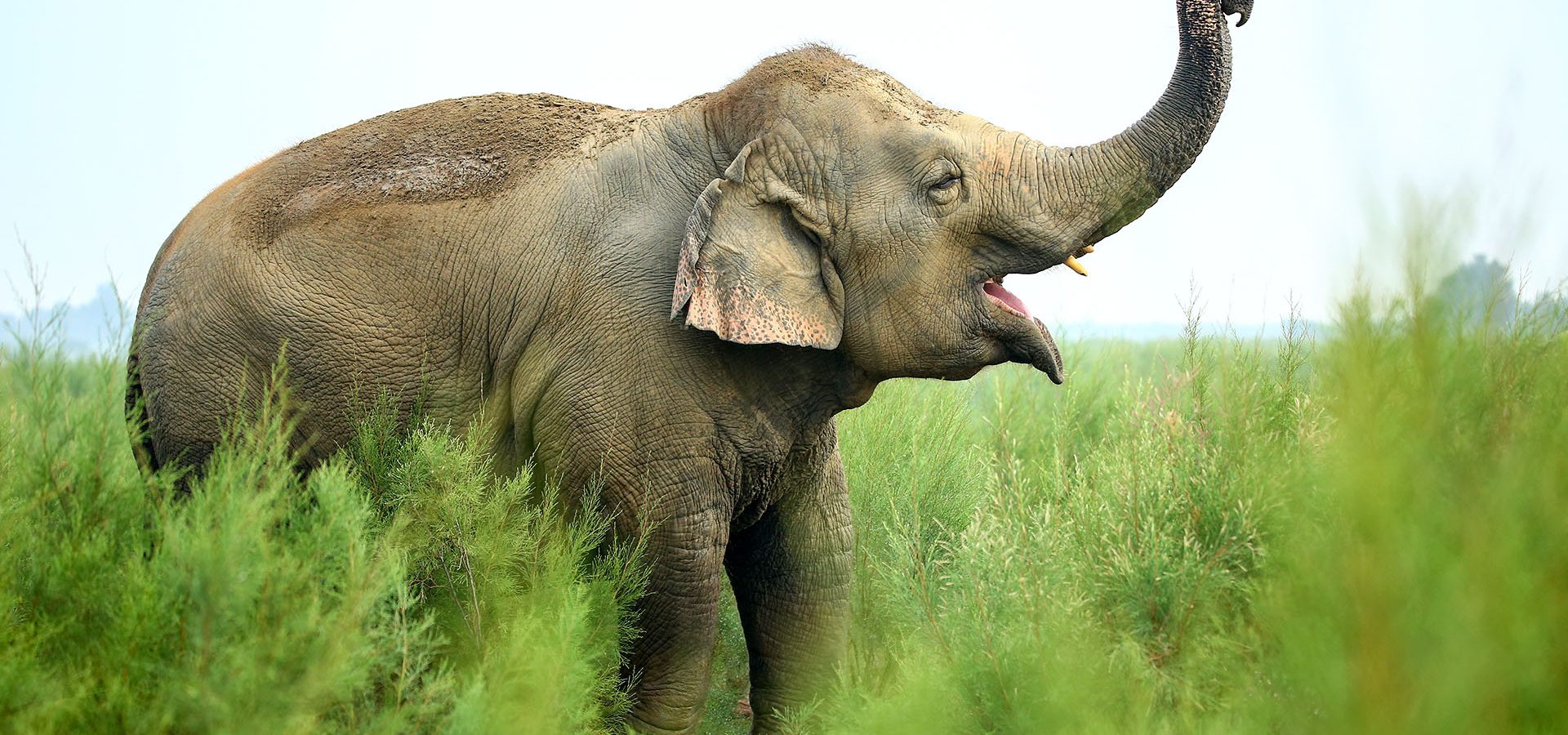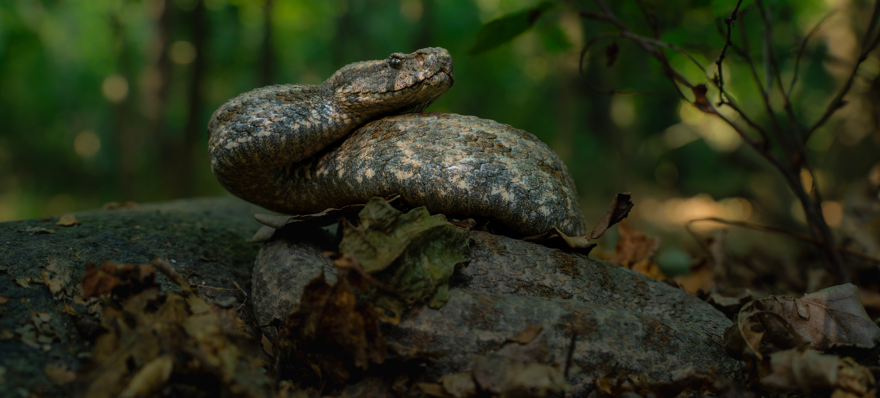From a baby’s babble to a loud, terrified yelp – sound provides expression that human beings understand. We hum when we are happy, and silently sob when upset; our vocal cords seem to perfectly reflect our moods.
But why do animals produce sounds? Is it simply because they enjoy it? Nope. Their acoustics are not just a composition of sounds, they are also carriers of information… even over long distances!
Animals are social beings as well, and their survival is highly dependent on their ability to communicate with partners, parents, babies, fellow individuals, and even rivals. Over several centuries, animals have evolved vocally to produce sounds: the syrinx of birds, the larynx of mammals, and the tymbals of cicadas are the organs that produce their distinctive sound. Today, nearly 10,000 birds, 7,000 frogs, 6,000 mammals, and innumerable invertebrates use audio signals to communicate.
Similar to how vital it is for humans, vocal communication forms the bedrock of animals in their correspondence. Their sounds can vary to suit the situation – one call to alert members about a nearby predator, another to woo a mate, and specific ones to announce their territory, compete for food, or signal distress. Animals are territorial and strive to protect their space from intruders using sounds.
While reading this report, we found that the sounds of a Fin Whale can travel over 6,000 kilometers, while that of a Blue Whale reach up to 180 decibels. The natural world sure has masters of acoustics! In this article, we compile some fun facts about musician animals and the sounds they produce!
Bats
Some species of bats use a high-pitched sound to attract a mate from their roost. Their squeaks can even reach over 100,000 Hertz… way beyond what a human can hear! Males are nature’s musicians and produce sounds during the mating season. They improvise their song with sequential tunes to engage the female. Bats also have calls to defend their territorial range from potential intruders. Another fun fact is that while bat pups learn melodies, simple and complex, from both their parents, it is usually the father that passes down the essential notes!
Elephants
With an ability to communicate over a distance of ten kilometers, elephants are one of the loudest terrestrial animals. But did you know that while their trumpet calls are evidently loud, they also create sounds to which human ears are deaf! Low-frequency sounds or infrasounds are used by elephants to maintain intimate bonds within their herd. The matriarch of the herd produces sounds to guide her entire group, while males use the same calls during their musth period. These sounds, along with an exchange of rumbles, roars, chirps, and squeaks, are inaudible to us as they fall much below the human auditory range.
Primates
Animals like monkeys, langurs, and chimpanzees are also known for their ability to produce a variety of sounds. Gibbons are known to create complex and the most interesting sounds in the world of primates. Within their species, the Siamangs are popular for their well-patterned duets. Siamangs are monogamous, and the two exchange spectacular, well-coordinated sounds. Gibbons vocalise not only to demarcate their territory but also to strengthen the bond they share with their family members. Their songs comprise bouts of booms, grunts, barks, and even screams!
Whales
These mighty sea creatures are not only known for their impressive size but also for their long-distance communication. Numerous whale species live in pods of up to a thousand individuals. In order to communicate with a pod member or another pod, whales emit distinct compositions, specific to their group. Their crooning comprises moans, howls, and cries produced especially by the males. Males of some species sing to attract a potential mate. Mothers of the humpback whales “whisper” to their calves while migrating long distances. Their soft communication protects the calf from predators like the killer whale hearing it.
According to a research published in 2020, the blue whales’ songs are in coordination with their feeding, mating, as well as migration cycles. Beluga whales, one of the smallest whales, are commonly known as the canaries of the sea. Their ability to creak, whistle, groan, chirp, squeal, and click is the reason why scientists bestowed this title upon them. Along with these harmonics, beluga whales also mimic the sounds of various animals… including humans!
Birds
No matter where you are, birds are sure to make their presence felt with their calls. Calls allow them to maintain contact with fellow birds, and even warn them of a potential predator lurking nearby! Their vocal apparatus, called the syrinx, is unique to the avian kingdom and allows them to produce complex, rhythmic symphonies. Birds sing for various purposes. They use unique sets of calls as warning signals, signs of threat, cries for help, and those to attract a mate. Males generally sing at dawn to display their health and vigour to potential mates.
Bird calls can be repetitive as the “koo-oo” of Asian Koel and “did-he-do-it” of Red-wattled Lapwing. Some, like the Drongo, can mimic the sound of other birds. Jungle Babblers are able to identify each member in their flock of seven by their unique call. Flycatchers and starlings can practise and learn new notes!
Insects
The forest is never silent. Even when you can’t hear a tiger roar or a bird chirp, a constant sound prevails. This could be from musical insects like cicadas and crickets. Male cicadas sing in chorus by vibrating their noise-producing organ called the tymbals. The tymbal membrane can vibrate nearly 400 times per second to produce its characteristic sound! With this, they hope to attract their female counterparts. When in distress, cicadas also produce a loud shrill, so as to warn others.
Bees live in large colonies comprising workers, drones, and a queen. They highly rely on coordination amongst each other to maintain task delegation. Their communication is through audio cues they produce: The buzz of the bees is created when they rapidly beat their wings. According to recent research, the queen also communicates with worker bees by quacking, piping, and tooting. Their repertoire also includes hissing when they come across any danger!
Herpetofauna
Amphibians possess a rich collection of calls and tunes. In fact, audio cues significantly help humans to track these jungle musicians. Male frogs and toads produce calls for courtship and territorial displays in the form of croaks, chirps, chucks, and whines. They have a vocal sac situated under their throat. In order to attract mates, frogs and toads undertake the battle for the loudest! They tend to also sing in a chorus by synchronising their calls.
Famously known to hiss, snakes use this sound to warn intruders and ward off predators. Some snakes even produce a burst of sound called bellow, in order to defend themselves. Cobras produce a growling sound when they feel threatened. Rattlesnakes are well-known for the rattle-like sound they produce by rapidly shaking their tails: Keratin rings located at the tail’s tip vibrate to warn animals about its presence.
Dolphins
The largest members of the dolphin family, Killer whales (or Orcas), are social creatures inhabiting the vast seas of the world. Each pod communicates through its own distinct calls. Besides using physical cues, marine animals use sounds to feed, find mates, warn about predators, socialise, and even navigate. Many dolphin species have the ability to echolocate, that is, navigate by emitting high-pitched sounds. Through this phenomenon, they create a mental map of their environment as the sounds they produce bounce back after hitting an object or another animal.
Clearly, animals have several sophisticated means to communicate. Stepping into the wild can be a mesmerising experience amidst their purpose-driven calls. From a frog’s croak and cricket’s chirp to a cicada’s thrum and bat’s squeak – the wild has so much to offer. So, the next time you set out on a nature trail, don’t forget to listen to the songs that animals can sing!





